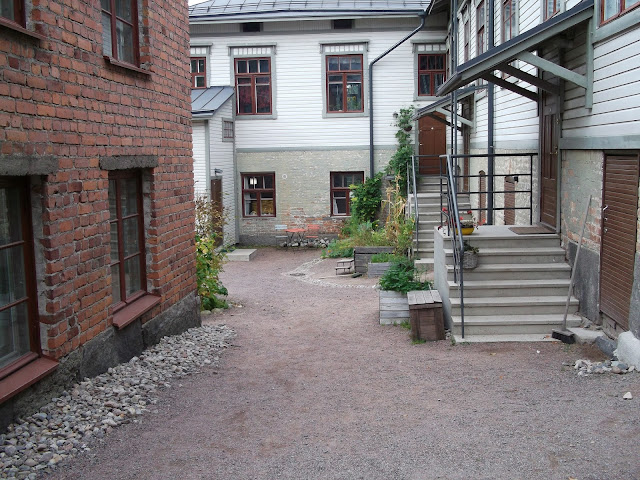I visited this space twice, a few weeks apart. Read about my unfruitful visit here. Fortunately the following week (on 19 September 2016) I was given the details of a local, Pasi, who was willing to show me around the neighbourhood with the eyes and insight of a resident.
Pasi had a copy of this book which sadly I cannot find on either eBay or Abebooks. I'm going to mention it in the text here - Käpylä by Matti Wacklin - just in case anyone wants to sell me a copy (for not much money, if that's OK). What I'd do with it is another question, particularly since obviously it's in Finnish, a language I am not that au fait with.What it does have, however, is this plan from I think 1911 which shows the origin of the space I'm interested in:
'Lapinesikaupunki' means 'Lapin suburb' (so says Google maps). There seems to be a handwritten text on the plan with a word which is either 'Heloninen' or (more likely) 'Helminen', but google translate doesn't have anything to contribute on either of these possibilities. What interests me more is that both this space and the Lapinpuisto (Lapin park) are kind of vague 'open spaces' without real borders.
Entering the space, we encounter one of Pasi's neighbours, Tallu, who tells us that the park is known locally as 'Pyykkikallio' or 'laundry rock'. The derivation of this is that the rock used to be (well, arguably still is) a great place to dry one's laundry, being a high point on the estate and useful on a windy day.
Tallu and her husband preside over the entry to the space (not, I should add, either of the entry points designated on the 1911 plan) and she, Pasi and others in the area have informally maintained it (Tallu: 'it was a jungle when we moved here twenty years ago'). For instance, when Pasi did some building on his land (over the road) the dirt was used to (for want of a better word) soften the space around the rock and make it more child-friendly. This small structure was a remainder from neighbours who were downsizing once their children had left home, and they installed it on the rock as a playhouse.
Both Pasi and Tallu are adamant that the space, used almost exclusively by children, is a safe and secure environment, overlooked as it is by surrounding houses. Pasi was also very keen, in discussions about Käpyllä generally, to reinforce its community and neighbourhood qualities.






















































